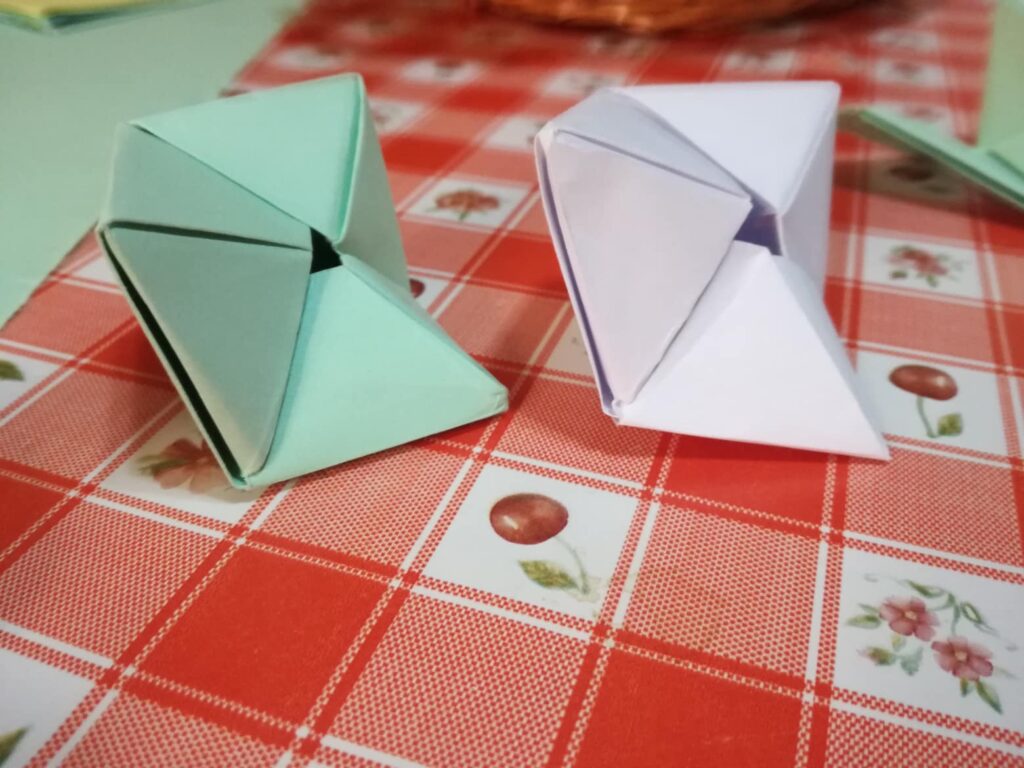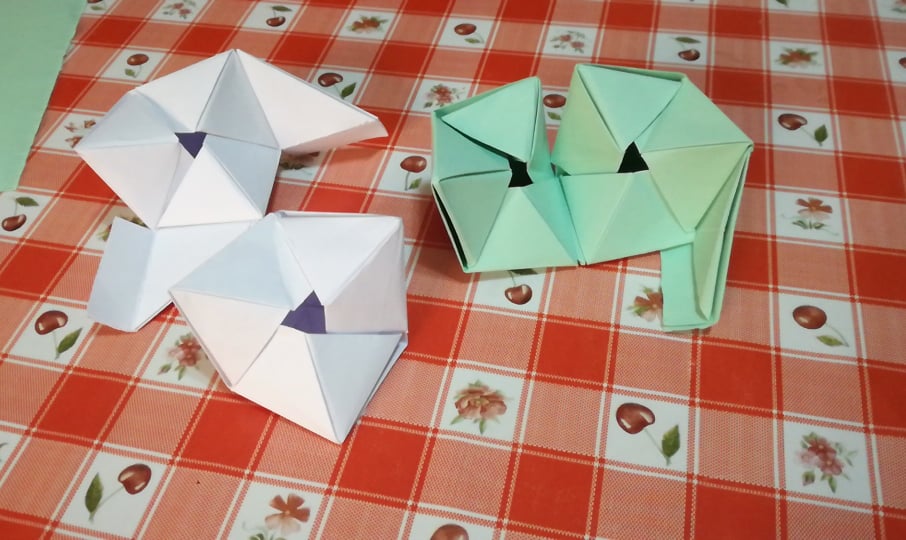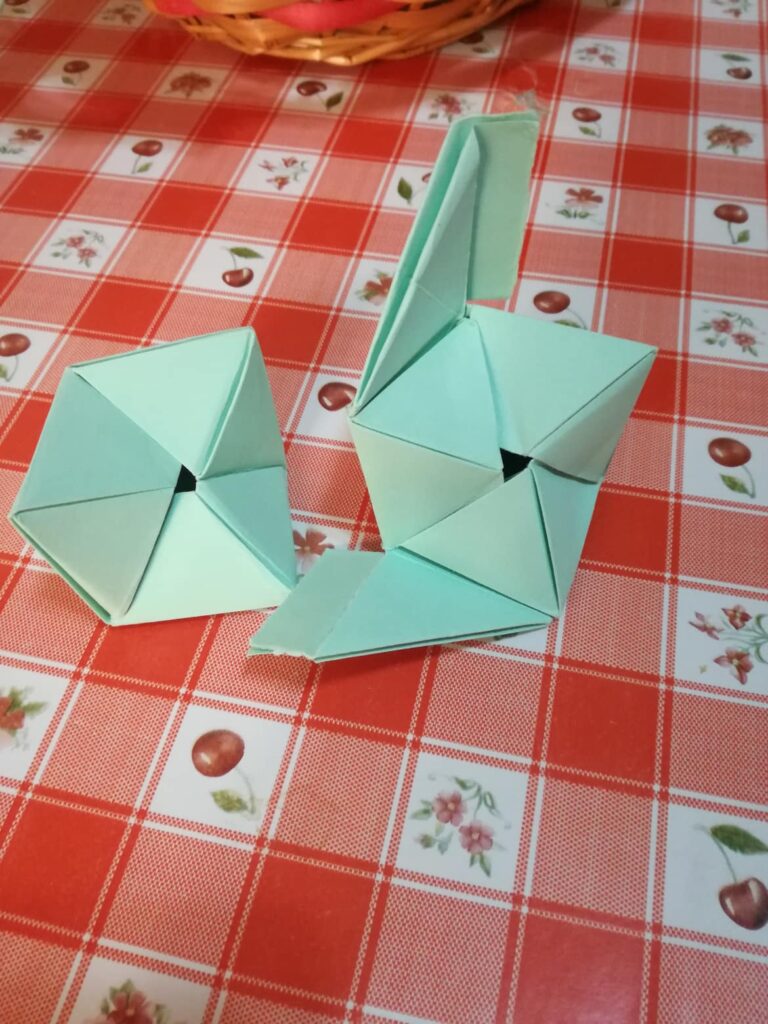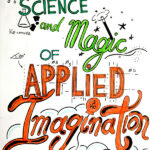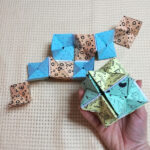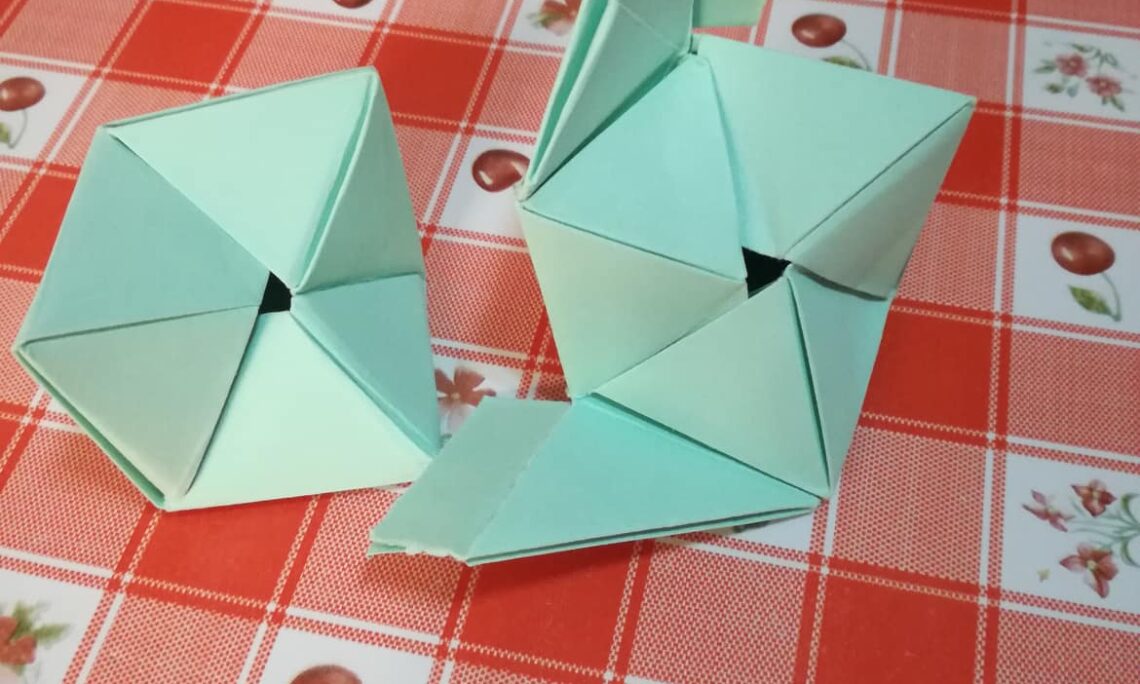
The Science and Magic of Applied Imagination – The Process and Blunders
As mentioned in my previous post, I chose origami as my “medium” of choice. Modular origami, to be more specific. The idea is to make a ‘double star flexicube’ – two cubes that can be turned inside out and one sits inside the other. Below is an example of what I want to make. I went origami as I think it reflects the title I gave to my response to this week’s task. Origami is a craft that incorporates art as well as geometry – the creative with the logical element.

Take 1
I have been watching a lot of tutorials on how to create this. I also downloaded instructions written by David Brill, an artist specializing in origami. It looks easy, but it requires patience and dedication in order to get it working. So far, I only got to the folding parts, which was not too difficult, even if I had to fold a total of 40 pieces to make it. I started off with a test using normal cartridge paper, like the tutorial said. As you can see below, the folding worked, but when I had to connect to pieces to each other, everything was falling apart.
I have to admit I got very frustrated, seeing that I was doing everything according to the tutorial, yet mine was a crying shame compared to the one in the tutorial. Back pain from a bad deadlift was not helping in the least and sleep deprivation was the cherry on the cake. After several futile attempts, I decided to put everything on the side and go to bed.
Take 2
New day, fresh start, right? I definitely felt better than the day before. I decided to try it out with slightly thicker paper. I did not go for cardstock as it would be too thick and rigid to work with overlapping folds. This thicker paper was easier to handle than the one I used in the first trail. However, I experienced a similar problem when it came to hinging the parts together. As there are multiple layers of paper, it is more difficult to insert the flaps inside the pockets, plus the hinges are not attached to any of the units, making it difficult to handle because of the moving parts.
So, I concluded that it was probably best to use thick paper for the units of the cubes and use cartridge paper for the hinges. Hopefully this tactic works.


